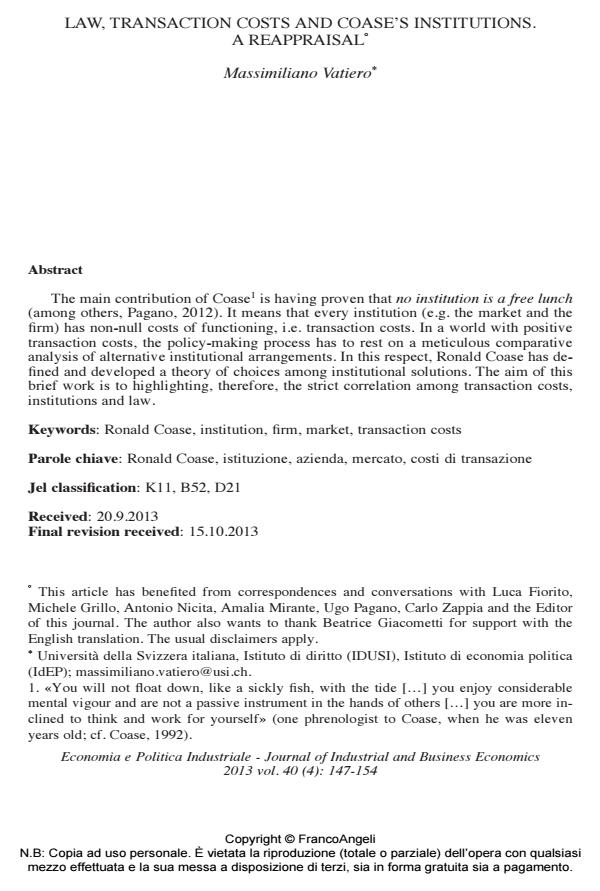Law, transaction costs and coase’s institutions. A reappraisal
Titolo Rivista ECONOMIA E POLITICA INDUSTRIALE
Autori/Curatori Massimiliano Vatiero
Anno di pubblicazione 2014 Fascicolo 2013/4
Lingua Inglese Numero pagine 8 P. 147-154 Dimensione file 90 KB
DOI 10.3280/POLI2013-004006
Il DOI è il codice a barre della proprietà intellettuale: per saperne di più
clicca qui
Qui sotto puoi vedere in anteprima la prima pagina di questo articolo.
Se questo articolo ti interessa, lo puoi acquistare (e scaricare in formato pdf) seguendo le facili indicazioni per acquistare il download credit. Acquista Download Credits per scaricare questo Articolo in formato PDF

FrancoAngeli è membro della Publishers International Linking Association, Inc (PILA)associazione indipendente e non profit per facilitare (attraverso i servizi tecnologici implementati da CrossRef.org) l’accesso degli studiosi ai contenuti digitali nelle pubblicazioni professionali e scientifiche
The main contribution of Coase1 is having proven that no institution is a free lunch (among others, Pagano, 2012). It means that every institution (e.g. the market and the firm) has non-null costs of functioning, i.e. transaction costs. In a world with positive transaction costs, the policy-making process has to rest on a meticulous comparative analysis of alternative institutional arrangements. In this respect, Ronald Coase has defined and developed a theory of choices among institutional solutions. The aim of this brief work is to highlighting, therefore, the strict correlation among transaction costs, institutions and law.
Parole chiave:Ronald Coase, istituzione, azienda, mercato, costi di transazione
Jel codes:K11, B52, D21
Massimiliano Vatiero, Law, transaction costs and coase’s institutions. A reappraisal in "ECONOMIA E POLITICA INDUSTRIALE " 4/2013, pp 147-154, DOI: 10.3280/POLI2013-004006